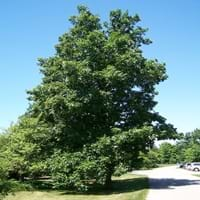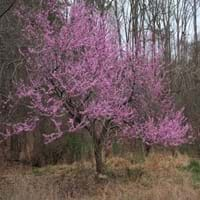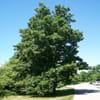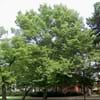Life Span
Perennial
Perennial
Origin
Northeastern United States, Mid-Atlantic United States, Southeastern United States, Central United States, Canada
Northeastern United States, Mid-Atlantic United States, Southeastern United States, North-Central United States, Central United States, South-Central United States, Southwestern United States, Canada
Types
Northern shagbark hickory, Southern shagbark hickory
Cercis
Number of Varieties
Not Available
Habitat
Woodland Garden Canopy
Bluffs, stream banks, Wet forest, Woods
USDA Hardiness Zone
4-8
3-9
Sunset Zone
Not Available
1a, 1b, 2a, 2b, 3a, 3b, 7, 8, 9, 10, 11, 12, 13, 14, 15, 16, 17, 18, 19, 20
Habit
Oval or Rounded
Oval or Rounded
Flower Color
Not Available
White, Purple, Pink, Light Pink
Flower Color Modifier
Bicolor
Bicolor
Fruit Color
Not Available
Brown, Chocolate
Leaf Color in Spring
Not Available
Purple, Plum
Leaf Color in Summer
Not Available
Dark Green
Leaf Color in Fall
Not Available
Yellow, Yellow green
Leaf Color in Winter
Not Available
Not Available
Leaf Shape
Pinnate
Heart-shaped
Plant Season
Spring, Summer, Fall
Spring, Summer, Fall
Sunlight
Full Sun
Full Sun, Partial Sun
Type of Soil
Loam, Sand
Clay, Loam, Sand
The pH of Soil
Acidic, Neutral
Acidic, Neutral, Alkaline
Soil Drainage
Well drained
Well drained
Bloom Time
Not Available
Early Spring, Spring, Late Spring
Tolerances
Not Available
Dry soil, Salt, Soil Compaction, Wet Site
Where to Plant?
Ground
Ground
How to Plant?
Seedlings
Seedlings, Stem Planting
Plant Maintenance
Medium
Low
Watering Requirements
Average Water Needs
Requires regular watering, Water more in summer
In Summer
Lots of watering
Lots of watering
In Spring
Moderate
Ample Water
In Winter
Average Water
Average Water
Soil pH
Acidic, Neutral
Acidic, Neutral, Alkaline
Soil Type
Loam, Sand
Clay, Loam, Sand
Soil Drainage Capacity
Well drained
Well drained
Sun Exposure
Full Sun
Full Sun, Partial Sun
Pruning
Remove damaged leaves, Remove dead branches, Remove dead leaves
Remove damaged leaves, Remove dead branches, Remove dead leaves, Remove hanging branches
Fertilizers
Apply 10-10-10 amount
fertilize in growing season, Nitrogen, slow-release fertilizers
Pests and Diseases
Leaf spot, Powdery mildew, Trunk Rot, Verticillium Wilt
Caterpillars, Red blotch, Scale
Plant Tolerance
Drought
Dry soil, Salt, Soil Compaction, Wet Site
Flowers
Insignificant
Showy
Flower Petal Number
Not Available
Single
Foliage Texture
Not Available
Medium
Foliage Sheen
Not Available
Glossy
Attracts
Mice, Red and Gray Squirrels
Birds
Allergy
breathing problems, Mouth itching, Sore Throat, Swelling, Throat itching
Mild Allergen
Aesthetic Uses
Not Used For Aesthetic Purpose
Beautification, Bonsai, Landscape Designing, Showy Purposes
Beauty Benefits
Moisturizing
No Beauty Benefits
Environmental Uses
Air purification
Air purification, Prevent Soil Erosion, Shadow Tree
Medicinal Uses
Analgesic, Antirheumatic
Astringent, Diarrhea, Dysentry, Fever, Leukemia
Part of Plant Used
Sap, Seeds
Bark, Buds, Flowers, Seeds
Other Uses
Used as an excellent fuel, Used in pies, cakes, Used to make yellow dye, used to prepare nut milk
Decoration Purposes, Showy Purposes, Used as firewood, Used As Food, Used as Ornamental plant, Used for its medicinal properties, Used for woodware
Used As Indoor Plant
No
Yes
Used As Outdoor Plant
Yes
Yes
Garden Design
Edible, Shade Trees
Feature Plant, Foundation, Mixed Border, Shade Trees
Botanical Name
CARYA ovata
CERCIS canadensis
Common Name
Shagbark Hickory
Eastern Redbud
In Hindi
Shagbark Hickory
Eastern Redbud
In German
Shagbark Hickory
OstRedbud
In French
Caryer ovale
Redbud Orient
In Spanish
Shagbark Hickory
Eastern Redbud
In Greek
Shagbark Hickory
Ανατολική κουτσουπιά
In Portuguese
Shagbark Hickory
Redbud oriental
In Polish
ORZESZNIK PIĘCIOLISTKOWY
Redbud wschodniej
Phylum
Magnoliophyta
Tracheophyta
Class
Magnoliopsida
Magnoliopsida
Order
Juglandales
Fabales
Family
Juglandaceae
Fabaceae
Clade
Angiosperms, Eudicots, Rosids
Angiosperms, Eudicots, Rosids
Tribe
Juglandeae
Cercideae
Subfamily
Juglandoideae
Caesalpiniaceae
Number of Species
Not Available
Properties of Shagbark Hickory and Eastern Redbud
Wondering what are the properties of Shagbark Hickory and Eastern Redbud? We provide you with everything About Shagbark Hickory and Eastern Redbud. Shagbark Hickory doesn't have thorns and Eastern Redbud doesn't have thorns. Also Shagbark Hickory does not have fragrant flowers. Shagbark Hickory has allergic reactions like breathing problems, Mouth itching, Sore Throat, Swelling and Throat itching and Eastern Redbud has allergic reactions like breathing problems, Mouth itching, Sore Throat, Swelling and Throat itching. Compare all the properties and characteristics of these two plants. Find out which of these plant can be used as indoor plant. If you are interested to decorate your house and garden, find out aesthetic uses, compare them and select the plant which will beautify your surrounding. Along with beautification, try comparing medicinal and edible uses of Shagbark Hickory and Eastern Redbud and you can choose the plant having best and most benefits.
Season and Care of Shagbark Hickory and Eastern Redbud
Season and care of Shagbark Hickory and Eastern Redbud is important to know. While considering everything about Shagbark Hickory and Eastern Redbud Care, growing season is an essential factor. Shagbark Hickory season is Spring, Summer and Fall and Eastern Redbud season is Spring, Summer and Fall. The type of soil for Shagbark Hickory is Loam, Sand and for Eastern Redbud is Clay, Loam, Sand while the PH of soil for Shagbark Hickory is Acidic, Neutral and for Eastern Redbud is Acidic, Neutral, Alkaline.
Shagbark Hickory and Eastern Redbud Physical Information
Shagbark Hickory and Eastern Redbud physical information is very important for comparison. Shagbark Hickory height is 1,830.00 cm and width 1,220.00 cm whereas Eastern Redbud height is 760.00 cm and width 760.00 cm. The color specification of Shagbark Hickory and Eastern Redbud are as follows:
Shagbark Hickory flower color: Not Available
Shagbark Hickory leaf color: Not Available
Eastern Redbud flower color: White, Purple, Pink and Light Pink
- Eastern Redbud leaf color: Purple and Plum
Care of Shagbark Hickory and Eastern Redbud
Care of Shagbark Hickory and Eastern Redbud include pruning, fertilizers, watering etc. Shagbark Hickory pruning is done Remove damaged leaves, Remove dead branches and Remove dead leaves and Eastern Redbud pruning is done Remove damaged leaves, Remove dead branches, Remove dead leaves and Remove hanging branches. In summer Shagbark Hickory needs Lots of watering and in winter, it needs Average Water. Whereas, in summer Eastern Redbud needs Lots of watering and in winter, it needs Average Water.





